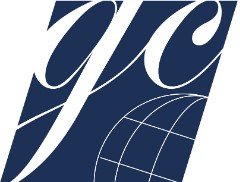Examining Canada’s NATO spending: Is 2 per cent of GDP worth it?
This article is part of a collaborative series between Global Conversations and The Public Policy and Governance Review.
In 2014, North Atlantic Treaty Organization (NATO) members pledged to increase their defence spending to 2 per cent of their Gross Domestic Product (GDP) by 2024. Members of NATO had cut their budgets after the Cold War but recent events, such as Russia’s militarization of its presence in the Arctic and China’s increasingly aggressive stance in the region, have shown a pressing need for NATO.
Central to NATO’s effectiveness is the funding provided by its member states. In 2018, then U.S. President Donald Trump urged NATO members to meet, and even double, the current target of 2 per cent of GDP in defence spending. Progress reports show that Canada, along with 20 other allies, did not meet this elevated goal. In 2019, President Trump called out Prime Minister Justin Trudeau for failing to meet the target of 2 per cent of GDP spent on defence, and even called him “two-faced.” In 2020, Canada’s defence spending was still less than 1.5 percent of GDP.
The weakened Canada-U.S. relationship and the debate over funding threatened to undermine an alliance vital to North American security. However, a recent virtual summit between Prime Minister Trudeau and U.S. President Joe Biden showed significant promise that relations between the two nations would heal. A statement provided by the White House, entitled “Roadmap for a Renewed U.S.-Canada Partnership,” highlights several areas for potential cooperation between the United States and Canada.
The Arctic is a vital area for both Canada and the United States to expand their commitments to NATO, combat climate change, and mitigate the security threats that are now present in an ever-changing region. China and Russia, two countries with which both Canada and the United States have fraught relations, are making a push into the Arctic and threatening Canadian and American interests. Russia has sought to increase its territory beyond its traditional and recognized Exclusive Economic Zone. Russia’s Arctic military presence is also increasing, with the reopening of a military base and the creation of the Northern Fleet Joint Strategic Command in 2014. China’s Arctic ambitions have also been made well known as they seek access to resources and a new shipping route through the Northwest Passage. While China does not currently have a military presence in the Arctic, the long-term potential of a Chinese presence has raised concerns in Washington.
These increasing security challenges and the commitments highlighted in the “Roadmap for a Renewed U.S.-Canada Partnership” demonstrate that the focus of building multilateral institutions and countering security concerns will likely be in the Arctic. Canada cannot counter threats in the Arctic alone, and must count on its international allies to do so effectively. Canada needs to demonstrate its commitment to international organizations such as NATO, including by meeting the alliance’s 2 per cent of GDP defence spending target, in order to secure the cooperation of our allies. Despite this need, Canada’s defence spending and procurement issues have raised concerns about its commitment to NATO.
Prime Minister Trudeau continues to argue that Canada has spent enough on defence, as the country is increasing its defence budget by 70 per cent over the next decade to $32.7 billion CAD, which includes significant investments in jets and naval vessels. However, the return on this spending is still called into question by delays in Canada’s procurement processes, particularly when it comes to building the ships necessary to secure Canada’s Arctic claims. A recent Auditor General’s report pointed out that Canada’s shipbuilding program has been poorly managed, and could leave the country with a capability gap—a period without enough frigates or coastguard ships to perform critical operations. The Office of the Auditor General also reported that the contracted shipbuilding yards—Vancouver Shipyards, Irving Shipbuilding in Halifax, and Chantier Davie in Quebec—were slow to deliver on combat and non-combat ships. This has resulted in the navy and coast guard spending millions of dollars to extend the life of existing ships.
According to updates on the shipbuilding strategy, the first of 15 frigates for the Royal Canadian Navy were due to be delivered in 2020, but that has been pushed back to 2030 at the earliest, with a tentative schedule showing the last ship being delivered in 2047. The Parliamentary Budget Office reported the 15 Canadian Surface Combatant ships will cost $77.3 billion CAD, and could hit as much as $82.1 billion CAD if the program is delayed by two years.
Prime Minister Trudeau has also pointed out that there are other ways to measure the value of a country’s military contributions, and frequently cites the steep price Canadian soldiers and peacekeepers have paid on allied missions around the world. Likewise, a recent report from Carnegie Europe pointed out that the 2 per cent metric is not an accurate way to measure military capability as it does not measure spending in real terms or actual output.
While a target of 4 per cent of GDP is not a perfect metric to measure military capability or commitment to international partners, it is still important that Canada demonstrate its loyalty to international partners by meeting these targets. Canada must also effectively address delays in its ship procurement process to reassure its allies in the face of new threats to security.

